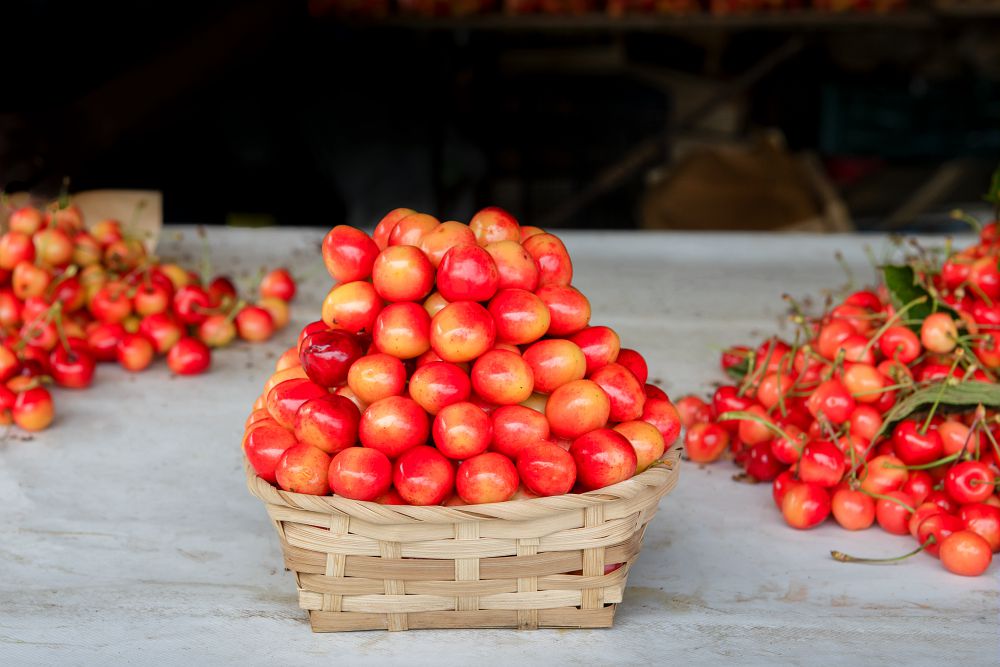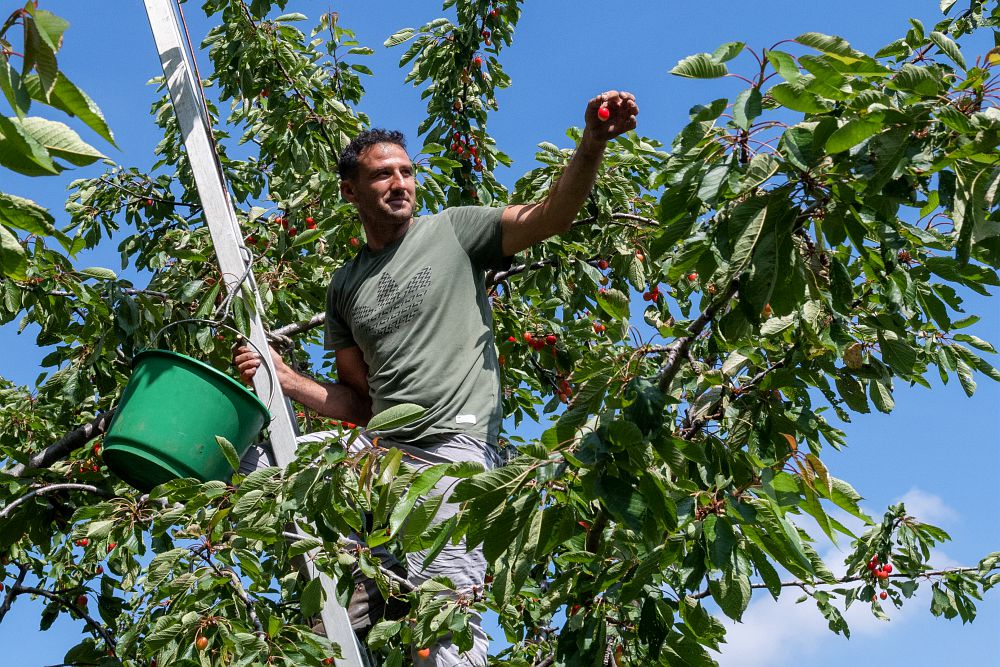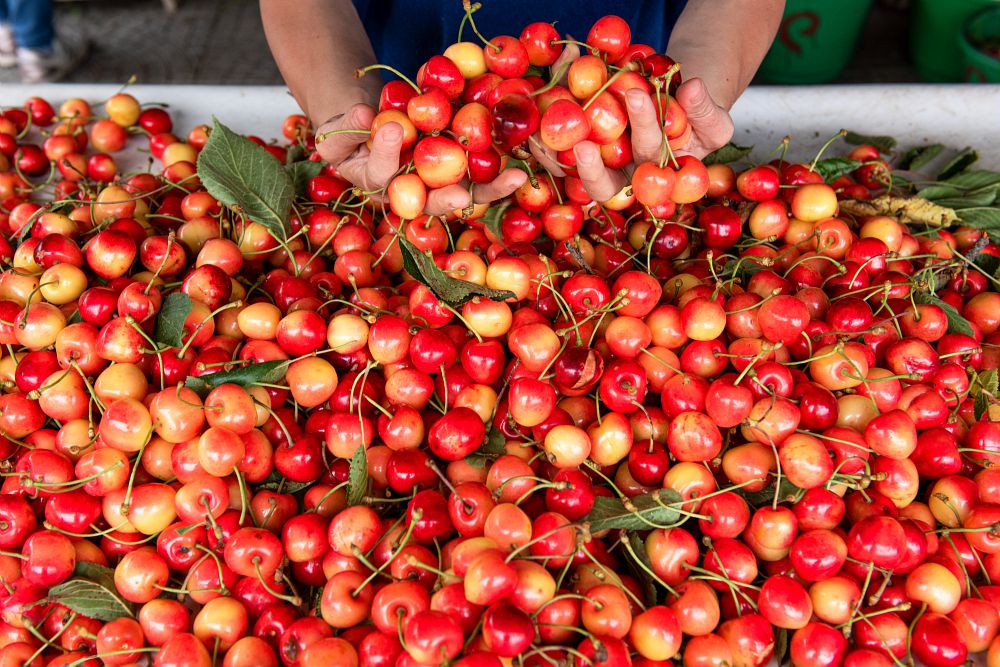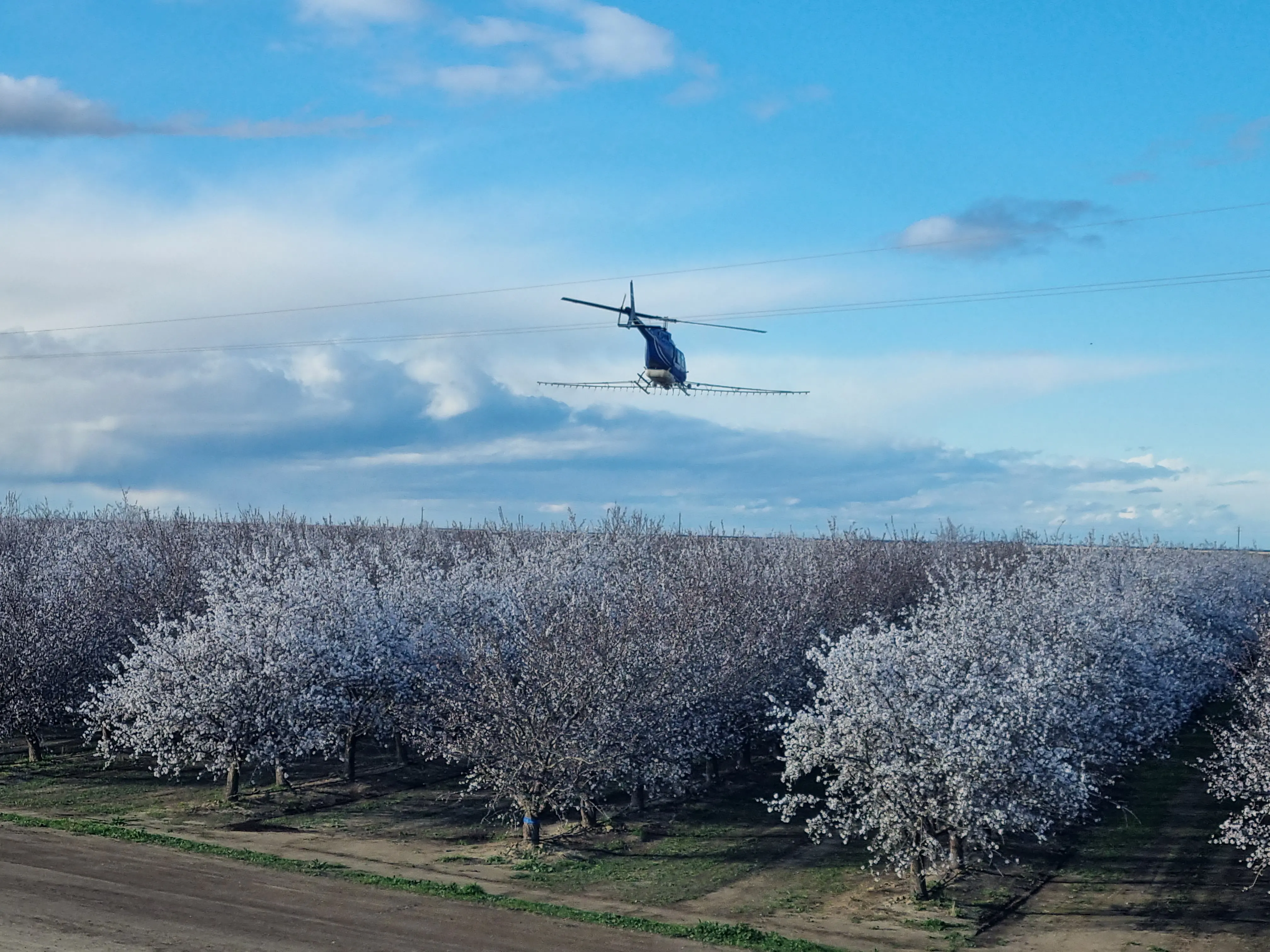It comes from the slopes of the Monti Lattari, a pre-Apennine area where the stable meadows give the dairy products unique aromas. The Somma dei Monti Lattari cherry is a new Slow Food Presidium, the latest to be established and number 44 in Campania. An ancient and delicious fruit, made unmistakable by its red colour mottled with a hint of white.

Large, firm and juicy, this cherry is particularly linked to the territory in which it grows. We are in the agricultural areas of Gragnano and Pimonte, in the province of Naples, in the hills behind the Monti Lattari, where already at the beginning of the 1600s some historical documents attest to the cultivation of cherries.
Here ‘the volcanic origin of the soil contributes to the fertility of the soils and gives particular organoleptic characteristics to the cultivated products,’ explains Simone Lucchisani, head of the newly founded Presidium.
If the lower area of Gragnano is traditionally dedicated to pasta production, the hilly area close to the mountains has always been appreciated for fruit and vegetable production and cherries, which in particular in the medieval village of Castello, the historic growing area, find the perfect exposure, mild but windy.
A peculiar microclimate ‘due to the fact that the area where the cherries are grown receives very little light for six months of the year. From April onwards, however, it gets as much sun as possible, from dawn to dusk,' says farmer Francesco Scala. Together with his father Ciro, the Presidium's producer representative, he is one of the four members of the project, which aims to encourage generational change among local farmers.
Known and appreciated throughout the region, particularly in Naples and on the Amalfi coast, the cherry of the Monti Lattari risked disappearing especially in the 1980s, when improved varieties of cherries from Turkey supplanted local production, which had also been reduced due to depopulation of the inland areas.

There are few specialised cherry orchards, present in promiscuous and traditional septa. The historical ones are characterised by tall trunks, for the harvesting of which long wooden ladders were once used.
‘Some trees are more than sixty years old,’ Scala continues, ‘and exceed 15 metres in height. This is a problem for harvesting, because no one is specialised in doing it anymore’. A knowledge that, like the product itself, the local community wants to protect thanks to the Presidium, supported by the municipality of Gragnano.
Also unique and unmistakable is the tradition of ‘bagging’ the cherries, i.e. arranging them in a pyramid shape to keep them fresh for longer. While the size has changed over the years - once large piles were made up, today 4-5 kilo crates or trays - the art of detaching the stalks of each cherry, by hand and with care, before arranging the fruit is unchanged.

Cherries arranged in this way have always been sold on the road down to the sea, towards Castellamare di Stabia: ‘they are unmistakable. Once you have tasted them, you don't forget them,' says Sabato Abagnale, president of Slow Food Monti Lattari Costa d'Amalfi.
The local Slow Food group was one of the promoters of the relaunch of the cherry and now hopes that the Presidium ‘can help promote the area and open it up to new tourism developments, also aiming to network with local restaurateurs and pastry chefs,’ Abagnale concludes. The Somma cherry, delicious fresh but easily perishable, is in fact traditionally processed into jams.
The cherry harvest runs from the third ten days of May until the beginning of July. The first appointment for the new Presidium is the annual festival, scheduled from 14 to 16 June in the village of Castello.
Source: Slow Food
Images: Slow Food (Paola Viesi)
Cherry Times - All rights reserved















